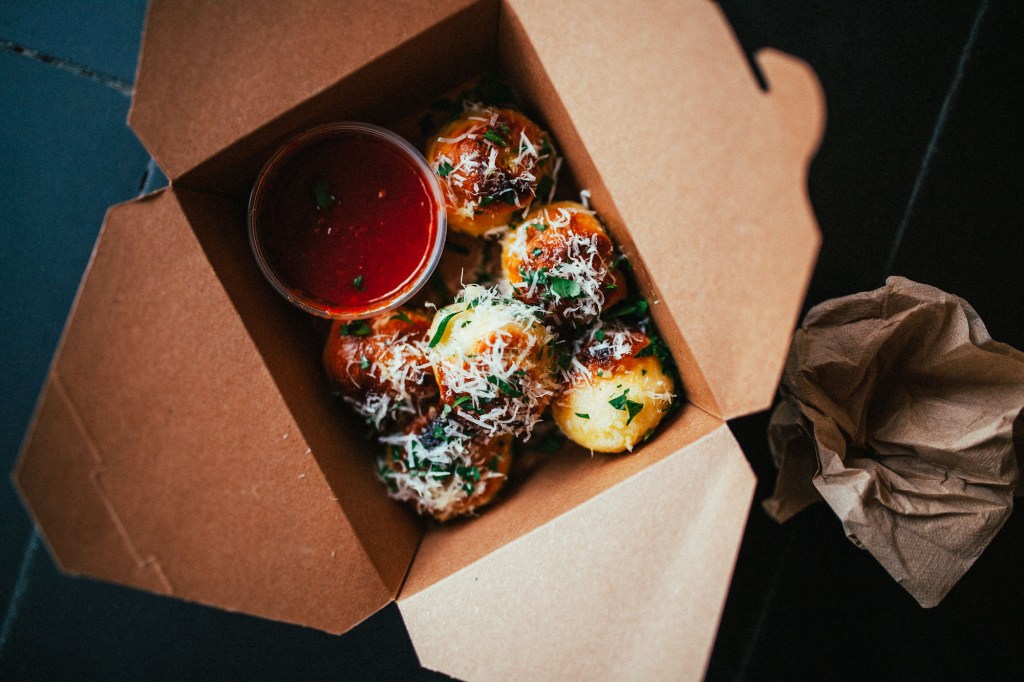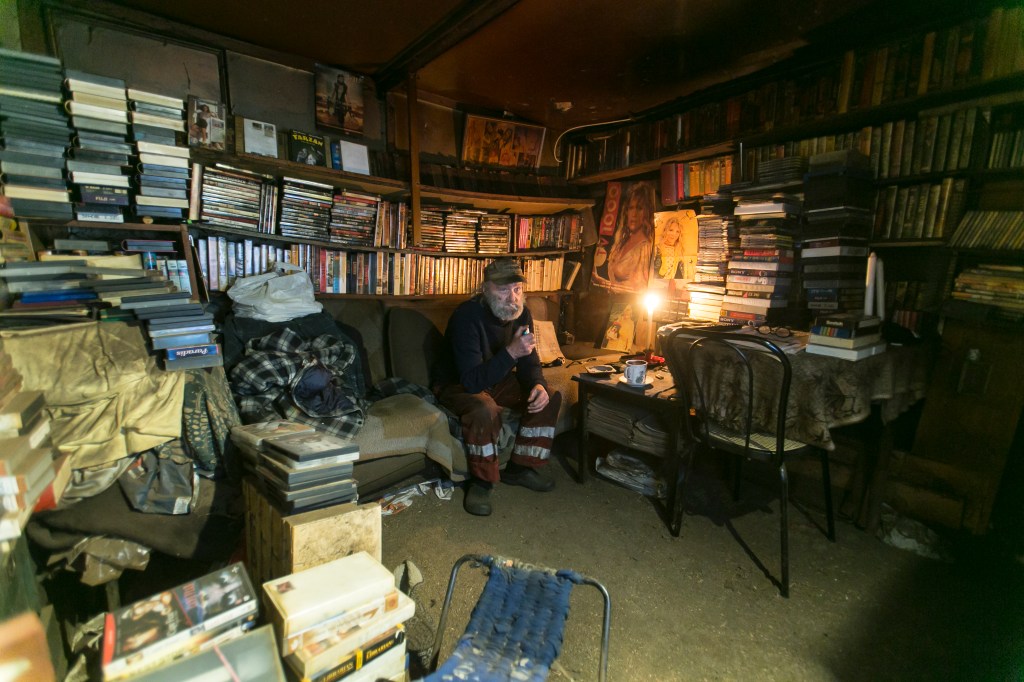Hundred-degree days were made exclusively for eating aguachile.
At least, that is the way it feels like when you are gingerly eating the fiery Mexican coastal dish that is traditionally composed of raw shrimp flash-marinaded in an emulsified, electric-green sauce, made from blended chiles and lime juice—all while not trying to not cry your eyes out from the blinding spice of the dish.
Videos by VICE
Call it Mexico’s answer to Peru’s leche de tigre, or just the perfect breakfast when you are the hung-the-fuck-over. The dish has risen to become the unofficial dish of summer in Los Angeles over the last few years, even outshining Mexican-style ceviche, as aguachile depends on whole shrimp and its quality can’t hide behind cucumber, cilantro, and onions in the way ceviche can. Its extremely high acid-based flavor bomb qualities have made it a favorite among local chefs, too, creeping its way into some popular eating establishments around town.

Tostada de aguachile at El Faro. Photo by Javier Cabral
Aguachile’s storied history is as amazing as the dish itself. It is believed to have been created in the northwestern state of Sinaloa, Mexico. Ana Victoria Ibanez—owner of El Faro, which specializes in aguachile in Highland Park—shares the same birth city of the dish: Mazatlan. She grew up eating aguachile there in the same way that American kids grow up eating fast food in the States. She tells me that according to local folklore, the dish evolved from a pre-Hispanic indigenous method of rehydrating sun-dried beef—also another staple food in the area—in water fortified with green chiltepin chiles. That recipe evolved to see the water swapped out for Mexican lime juice when the protein changed to a sea-based one.
This original minimalist formula is far cry from the stuff served atop tostadas in LA. Finding a decent representation of the dish in this city can be a nearly impossible task (especially when your girlfriend, who was born and raised in the Mexican coast, cooks for a living). Apparently, it all comes down to the quality of the seafood, among other reasons.

Aguachile at Mariscos El Tejado. Photo by Javier Cabral
“Most places have flavors that are on point, but their sourcing for good seafood sucks.” Paola Briseño González—my girlfriend—tells me when I ask her why she thinks the dish can’t be as good as it could be stateside. She moved to LA five years ago and expected it to be a miniature model of her home country, with all of the accolades the city gets for its Mexican food.
She explains a little further: “People just don’t demand it. Restaurants can use tilapia or low-quality shrimp plumped with phosphates and it will pass here in a way that won’t fly in any Mexican coastal town.” Naturally, as the native and staunch Angeleno that I am, I try to prove her wrong immediately and embark on an aguachile day quest throughout the city; we hit up three spots in six hours.

Habanero aguachile from La Tostaderia. Photo courtesy of Andrea Alonso
We start at El Faro, where she instantly bonds with Ibanez over the shitty state of LA’s seafood, despite the fact that Paola’s hometown is Puerto Vallarta and the aguachile style there is different than Mazatlan’s. (Mostly due to the addition of cilantro and serrano chiles over chiltepin). Ibanez immigrated here in 2004 and started El Faro as a way to remedy that, which explains why we already eat at El Faro at least once a month.
After this, we make our way to La Tostaderia, the seafood specialist in downtown’s Grand Central Market. We are greeted by the chef and owner, Fernando Villagomez. His aguachile is one of his most popular options on the menu and for good reason, since the quality of the shrimp is some of the highest at any mariscos shop in LA. However, even he agrees that his aguachile is anything but traditional, relying on the floral heat from habaneros for the lip-smacking chile qualities of aguachile. It is great in its own unique way but not exactly the aguachile of my girlfriend’s dreams.

Scallop aguachile. Photo by Paola Briseño González
Still not full from insanely spicy seafood, we drive a few miles towards East LA and make a pit stop at Mariscos El Tejado in Boyle Heights. The thick, tart, bright-green sauce adorning the shrimp looked extremely promising. The place even boasted a version topped with a generous handful of tender octopus. Still, while the eye-opening flavor is true to its coastal Mexican origins, it is brought down a few notches due the the baking soda-like flavors of the phosphates added to the raw shrimp.
We return home defeated. Paola, being the avid cook that she is, calls her mom, who used to own a mariscos restaurant in Puerto Vallarta, to get her recipe for aguachile. She whips up the aguachile salsa and we pour it into a bowl filled some fresh scallops we happen to have on hand. I take my first bite, and suddenly I understand why both my girlfriend and Ibanez obsess over the details of this simple dish. It’s like a sashimi from hell, insanely addictive and refreshing at the same time.
I can probably eat it every day and still not get bored of it. And now that I kind of know how to make it at home, I will probably do exactly that. That being said, I’m still not giving up hope for finding a perfect aguachile in LA. Good thing summer has just begun.



